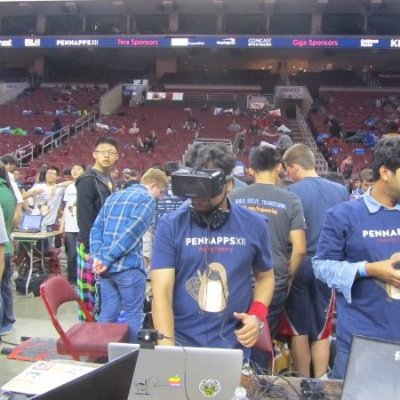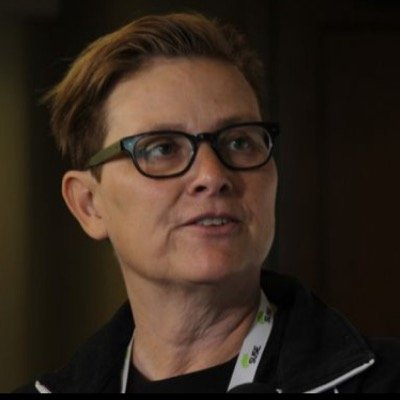 Last week, HL7 held it’s annual plenary meeting in Baltimore at the Hyatt Regency...For the FHIR project, our main attention was the ballot. Across the core standard, and multiple implementation guides, we received >800 detailed comments as part of the ballot. This represents a slight increase over the last ballot, but there was a clear change in the focus of the comments – there was a significant drop in the number of comments relating to the infrastructure, and much more focus on the domain content, and it’s applicability to real world problems. This is a clear marker of the growing maturity of the standard. We continue to expect that we’ll publish FHIR release 3 at the end of this year.
Last week, HL7 held it’s annual plenary meeting in Baltimore at the Hyatt Regency...For the FHIR project, our main attention was the ballot. Across the core standard, and multiple implementation guides, we received >800 detailed comments as part of the ballot. This represents a slight increase over the last ballot, but there was a clear change in the focus of the comments – there was a significant drop in the number of comments relating to the infrastructure, and much more focus on the domain content, and it’s applicability to real world problems. This is a clear marker of the growing maturity of the standard. We continue to expect that we’ll publish FHIR release 3 at the end of this year.
News
How Percona Has Built a Successful Open Source Business Based on Support and Services Revenues
 The open source community is a diverse and fractious collection of individuals and organizations. In its infancy, in many ways it could be compared to the hippie movements of the '60s: a lot of passion, a lot of fun, a lot of weirdness, and not a lot of organization. Over the last decade or so, it has evolved into a respected software development force that relies on the support of its members. As it's grown and diversified over the last decade, it has gotten more mainstream in the sense that there are now many different players that are making quite a bit of money based on open source principles. It has more prestige and a lot more respectability. As they say, money changes everything...
The open source community is a diverse and fractious collection of individuals and organizations. In its infancy, in many ways it could be compared to the hippie movements of the '60s: a lot of passion, a lot of fun, a lot of weirdness, and not a lot of organization. Over the last decade or so, it has evolved into a respected software development force that relies on the support of its members. As it's grown and diversified over the last decade, it has gotten more mainstream in the sense that there are now many different players that are making quite a bit of money based on open source principles. It has more prestige and a lot more respectability. As they say, money changes everything...
- 2 comments
- News
Fluxday: A no-fuss open source productivity tracker
 There are only so many hours in the day, so making the most of your time is critical. There are two ways to increase your output: Put in more hours or work smarter. I don't know about you, but I prefer the latter. If you go online and search for ways to improve your productivity, you'll find many articles with tips and tricks for working smarter and changing your habits. This works really well at a personal level, but when you're looking to get your entire team to be more productive and align everyone in the company toward a collective time-dependent goal, nine times out of ten you will reach the same point: looking for a platform to track employee contributions and time spent on tasks towards achieving smaller goals, and then integrating those to your company's goals...
There are only so many hours in the day, so making the most of your time is critical. There are two ways to increase your output: Put in more hours or work smarter. I don't know about you, but I prefer the latter. If you go online and search for ways to improve your productivity, you'll find many articles with tips and tricks for working smarter and changing your habits. This works really well at a personal level, but when you're looking to get your entire team to be more productive and align everyone in the company toward a collective time-dependent goal, nine times out of ten you will reach the same point: looking for a platform to track employee contributions and time spent on tasks towards achieving smaller goals, and then integrating those to your company's goals...
- Login to post comments
- News
Why Public Libraries Need to Support Open Source
 People turn to public libraries for answers, and a lot of times libraries are superb at providing them. But when it comes to providing answers about open source, libraries have an uneven track record. What can we do to make this better so that more people can turn to their public library to learn about open source software, hardware, and principles? Right now, if you walked into my public library and pelted me with questions about open source—like, "What is it?" "How does it work?" "How can I use open source?"—I'd rattle off answers so fast you'd be walking out with a new tool or technology under your belt. Open source is a big world, so of course there are some things I don't know, but guess what?...
People turn to public libraries for answers, and a lot of times libraries are superb at providing them. But when it comes to providing answers about open source, libraries have an uneven track record. What can we do to make this better so that more people can turn to their public library to learn about open source software, hardware, and principles? Right now, if you walked into my public library and pelted me with questions about open source—like, "What is it?" "How does it work?" "How can I use open source?"—I'd rattle off answers so fast you'd be walking out with a new tool or technology under your belt. Open source is a big world, so of course there are some things I don't know, but guess what?...
- Login to post comments
- News
OpenMRS Community Launches Major Upgrade to its Open Source EHR Platform
 The OpenMRS Community has released a major upgrade to to its widely deployed open source EHR, OpenMRS. The result of the work of more than 100 OpenMRS Community Members from around the world the OpenMRS Platform 2.0 release is the first release of the 2.x family and takes a quantum leap in its base technology as it incorporates the latest web technologies and standards into its modular architecture. At the same time, OpenMRS retains the capability of supporting many legacy features.
The OpenMRS Community has released a major upgrade to to its widely deployed open source EHR, OpenMRS. The result of the work of more than 100 OpenMRS Community Members from around the world the OpenMRS Platform 2.0 release is the first release of the 2.x family and takes a quantum leap in its base technology as it incorporates the latest web technologies and standards into its modular architecture. At the same time, OpenMRS retains the capability of supporting many legacy features.
- Login to post comments
- News
A Guide to Building Trust in Teams and Organizations
 My travels globally have given me a feeling for how best to work in many different contexts—like Latin America, West Africa, North Africa, and Southeast Asia, to name a few. And I've found that I can more easily adapt my work style in these countries if I focus on something that plays a role in all of them: trust. In The Open Organization, Jim Whitehurst mentions that accountability and meritocracy are both central components of open organizations. Trust is linked to both of those concepts. But the truth, I've found, is that many people don't have the information they need to determine whether they can trust a person or not. They need data, along with a system to evaluate that data and make decisions...
My travels globally have given me a feeling for how best to work in many different contexts—like Latin America, West Africa, North Africa, and Southeast Asia, to name a few. And I've found that I can more easily adapt my work style in these countries if I focus on something that plays a role in all of them: trust. In The Open Organization, Jim Whitehurst mentions that accountability and meritocracy are both central components of open organizations. Trust is linked to both of those concepts. But the truth, I've found, is that many people don't have the information they need to determine whether they can trust a person or not. They need data, along with a system to evaluate that data and make decisions...
- Login to post comments
- News
Grahame Grieve's FHIR report from Baltimore HL7 Meeting
- Login to post comments
- News
Why Implanted Medical Devices Should Have Open Source Code
 As medical implants become more common, sophisticated and versatile, understanding the code that runs them is vital. A pacemaker or insulin-releasing implant can be lifesaving, but they are also vulnerable not just to malicious attacks, but also to faulty code. For commercial reasons, companies have been reluctant to open up their code to researchers. But with lives at stake, we need to be allowed to take a peek under the hood. Over the past few years several researchers have revealed lethal vulnerabilities in the code that runs some medical implants.
As medical implants become more common, sophisticated and versatile, understanding the code that runs them is vital. A pacemaker or insulin-releasing implant can be lifesaving, but they are also vulnerable not just to malicious attacks, but also to faulty code. For commercial reasons, companies have been reluctant to open up their code to researchers. But with lives at stake, we need to be allowed to take a peek under the hood. Over the past few years several researchers have revealed lethal vulnerabilities in the code that runs some medical implants.
- Login to post comments
- News
Solving Design Problems in Healthcare Starting with the Waiting Room
 A few days ago ProPublica had a headline I wished I'd written: If It Needs A Sign, It's Probably Bad Design. Although the article started with a health care example (EpiPen of course, citing Joyce Lee's brilliant post), it wasn't focused on health care -- but it might as well have been. Health care is full of bad design, and of signs. Take, for example, the waiting room. When most patients enter a provider's office or facility, the first thing they are likely to see is a waiting room. The waiting room probably has other would-be patients already waiting there, each full of their own health concerns. In some instances, the initial waiting room is merely a staging area; once processed, patients may be sent to yet another waiting room to wait some more. And, of course, once they eventually do reach an exam room, they'll probably endure some more waiting, no matter how long their wait has already been...
A few days ago ProPublica had a headline I wished I'd written: If It Needs A Sign, It's Probably Bad Design. Although the article started with a health care example (EpiPen of course, citing Joyce Lee's brilliant post), it wasn't focused on health care -- but it might as well have been. Health care is full of bad design, and of signs. Take, for example, the waiting room. When most patients enter a provider's office or facility, the first thing they are likely to see is a waiting room. The waiting room probably has other would-be patients already waiting there, each full of their own health concerns. In some instances, the initial waiting room is merely a staging area; once processed, patients may be sent to yet another waiting room to wait some more. And, of course, once they eventually do reach an exam room, they'll probably endure some more waiting, no matter how long their wait has already been...
- Login to post comments
- News
OpenShift Commons Gathering Event Preview
 We're just two months out from the OpenShift Commons Gathering coming up on November 7, 2016 in Seattle, Washington, co-located with KubeCon and CloudNativeCon. OpenShift Origin is a distribution of Kubernetes optimized for continuous application development and multi-tenant deployment. Origin adds developer and operations-centric tools on top of Kubernetes to enable rapid application development, easy deployment and scaling, and long-term lifecycle maintenance for small and large teams. And we're excited to say, the 1.3 GA release of OpenShift Origin, which includes Kubernetes 1.3, is out the door! Hear more about the release from Lead Architect for OpenShift Origin, Clayton Coleman...
We're just two months out from the OpenShift Commons Gathering coming up on November 7, 2016 in Seattle, Washington, co-located with KubeCon and CloudNativeCon. OpenShift Origin is a distribution of Kubernetes optimized for continuous application development and multi-tenant deployment. Origin adds developer and operations-centric tools on top of Kubernetes to enable rapid application development, easy deployment and scaling, and long-term lifecycle maintenance for small and large teams. And we're excited to say, the 1.3 GA release of OpenShift Origin, which includes Kubernetes 1.3, is out the door! Hear more about the release from Lead Architect for OpenShift Origin, Clayton Coleman...
- Login to post comments
- News
Halamka Outlines Social Media Guidelines for Beth Israel Clinicians
 We recently published this guideline at Beth Israel Deaconess Medical Center (BIDMC) based on the input from a multi-disciplinary working group. I thought it might be useful to share with the community, since many healthcare organizations are at the early stage developing social media policies...We receive reviews on all our social media sites. Some are informal, like a tweet. Some are formal reviews, like on Facebook, Yelp, Google+, etc. BIDMC monitors all sites 24/7 using a social media dashboard. To maintain our integrity, BIDMC follows the same social media guidelines as the universal online community. This means...
We recently published this guideline at Beth Israel Deaconess Medical Center (BIDMC) based on the input from a multi-disciplinary working group. I thought it might be useful to share with the community, since many healthcare organizations are at the early stage developing social media policies...We receive reviews on all our social media sites. Some are informal, like a tweet. Some are formal reviews, like on Facebook, Yelp, Google+, etc. BIDMC monitors all sites 24/7 using a social media dashboard. To maintain our integrity, BIDMC follows the same social media guidelines as the universal online community. This means...
- Login to post comments
- News